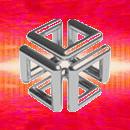jmc wrotes:
> I tried it again with the command you posted but I can't get it to work.
What exactly did you enter?
> It gives me:
> and then stops capturing. Without an audio track I was able to capture for minutes without a problem...
Odd... perhaps the audio is not being dealt with properly.
> Is this related to the limited RAM (128MB) I have?
Hard to say, I've never done video stuff on an O2 with that little RAM.
> I also tried capturing using media tools -> movie recorder but after capturing it has to process the movie for ages...
> I mean, if the O2 does the jpeg compression in hardware it shouldn't have to do that right?!
That will happen if you select single-frame instead of 2-field for the compression format.
Ian.
> I tried it again with the command you posted but I can't get it to work.

What exactly did you enter?
> It gives me:
Code:
audio buffer overflow (can't write movie file fast enough)
It works for around 8 seconds usually
> and then stops capturing. Without an audio track I was able to capture for minutes without a problem...
Odd... perhaps the audio is not being dealt with properly.
> Is this related to the limited RAM (128MB) I have?
Hard to say, I've never done video stuff on an O2 with that little RAM.
> I also tried capturing using media tools -> movie recorder but after capturing it has to process the movie for ages...

> I mean, if the O2 does the jpeg compression in hardware it shouldn't have to do that right?!
That will happen if you select single-frame instead of 2-field for the compression format.
Ian.




 bummer
bummer


